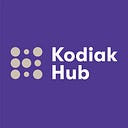SaaS is the new Black
Supply Chain Management in style.
By Sam Jenks
Software-as-a-Service (SaaS) is defined by Gartner as: “software that is owned, delivered and managed remotely by one or more providers” (Gartner).
Providers typically supply their software services, via installation, cloud, or web solutions to various clients in need. SaaS solutions and tools are usually, but not always, on a pay-for-use basis defined by yearly, monthly or one-time subscriptions.
SaaS usage has become an increasing trend by business in various industries. The market size of SaaS solutions has had substantial exponential growth in the last 5 years and has been predicted to grow continuously.
Digitalization has made waves in multiple parts of the traditional business ocean. Sales systems have been moving onto CRM platforms for years. SEO and SEM practices are becoming automated left and right by various software companies such as WordStream and SemRush.
In the past few years, SaaS business has made a large push in the digitalization of SCM (supply chain management) functionalities such as sourcing, procurement, logistics, quality control, compliance, risk management, supplier assessment and supplier management.
SaaS solutions are automating business practices, empowering executives, associates and trainees alike; turning you into the consultant you once hired to complete the job.
Software-as-a-service has just begun its reign over the business kingdom. How long it will hold the crown can only be hypothesized. In the meantime, I suggest we lunge directly into the belly of the beast, and decipher how SaaS solutions can improve your business practices and supply chain.
Bye-Bye SpreadSheets, Hello Efficiency.
Classic procurement relied heavily on the comparison and analysis of supplier efficiency, quality, compliance, performance and risk involved in sourcing and purchasing practices.
This information would be gathered from- you guessed right; the compilation of spread sheets.
For years, these statics would be logged into excel, by supply chain, logistics, purchasing and sustainability managers. After long-winded, potentially time-ineffective, processing of information, CPO’s would be supplied with the proper analytics to make decisions about supplier performance and future procurement proceedings.
I can understand what the fuss is all about.
Practicing such monotonous efficiency, paying so much attention to detail, within supply chain management is awesomely important for corporations. “[…] The goal of SCM is to achieve greater profitability by adding value and creating efficiencies, thereby increasing customer satisfaction” (Stock and Boyer 2009). Achievement created from properly practiced supply chain management becomes increasingly important as corporations get larger and have more suppliers. Inherently, these are the same corporations with large customer bases. These are customers who care about the brand and value of companies from which they consume.
With the evolution of supply chain software however, the entire SCM process is becoming automated; reducing supply chain risks, leaving your procurement team happier, and with an abundance of time to focus on other internal supply chain tasks.
The availability of real-time information concerning inventory, production, distribution and delivery performance is unparalleled by traditional procurement and logistics functions (Al-jawazneh 2016).
Keeps on innovating.
Because the business landscape is changing so rapidly, having SaaS utilization in your business’ everyday is becoming food and water (the necessities).
Utilizing outside software systems allows your company to automate many business processes as stated earlier, but it also allows your company to update and innovate those business processes on a regular basis.
Just this past year Salesforce Cloud systems upgraded to the Lightning UI and UX for their market leading CRM system. Guess whom upgraded/innovated along with them?
Subscribers!
Having a subscription with a SaaS solution company allows you access to a community of innovation and constant internal improvement. SaaS corporations will continue to provide your company with unique, agile and innovative service experiences.
How can I be so sure about this?
Because; if a SaaS company didn’t continue to provide a quality service, you’d probably just start a subscription with their competitor.
Turns Big Data into Action
SaaS solutions allow your business, especially your supply chain, to store data in various fields to be used for later comparison and analysis. This Big Data shrink is done intelligently, instantaneously and continuously in a fashion a human being could never store information.
In the same fashion the data is stored, you can make your business decisions; quickly and knowledgeably.
For smaller corporations, without an IT team on hand at a moment’s notice, the use of a SaaS application can make Big Data collection layman’s terms (apogaeis.com 2016).
Until next week.
Find out how Kodiak Rating’s Supplier Relationship Management SaaS Solution can help make sure you’re holding suppliers to the standards your customers deserve.
